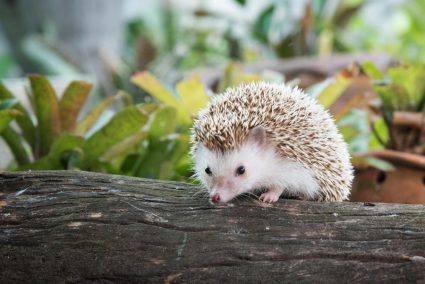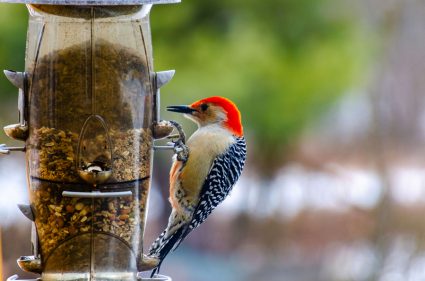
Rabbits are adorable pets, but they’re also natural diggers. Their instinct to burrow can often lead to them digging their way out of their pens. As a rabbit owner, this can be a real concern, especially if you want to ensure your furry friend’s safety. In this comprehensive guide, we’ll delve into the various methods you can employ to prevent your rabbit from digging out of their pen.
To prevent rabbits from digging out of a pen, use durable materials like vinyl flooring, wire mesh, or PVC-coated poultry netting for the pen. Make sure the pen has a secure latch or lock, is tall enough to prevent jumping, and has a cover or roof. Bury a barrier beneath the pen and rabbit-proof the surrounding area. Condition your rabbit’s behavior by providing a stimulating environment, alternative digging options, tunnel-like spaces, a companion rabbit, and use positive reinforcement. Finally, deter rabbits from digging by using paving stones or gravel, rabbit-repellent plants, or taste deterrents.
Understanding Why Rabbits Dig
Before we jump into prevention methods, it’s crucial to understand why rabbits dig in the first place. Digging is a natural and instinctive behavior for rabbits. Most wild rabbit species live in underground burrows, which provide safety from predators and protection from extreme temperatures.
Rabbits may dig for various reasons like uncovering food, exposing cool earth, escaping, seeking attention, or due to stress or boredom. Understanding these behaviors can help you create a more comfortable and satisfying environment for your pet, reducing their desire to escape.
Effective Materials for Building a Rabbit-Proof Pen
When creating a rabbit-proof pen, consider using materials that are durable, easy to clean, and safe for your rabbit. Some of the most effective materials include:
- Vinyl flooring: This is a cheap and easy-to-clean option for covering the floor of your rabbit pen.
- Wire mesh or chicken wire: For the walls of the pen, wire mesh or chicken wire is a popular choice. It’s budget-friendly and effectively keeps rabbits contained while allowing them to see their surroundings.
- Metal exercise pens: These are versatile, easy to clean, and provide ample space for your rabbit to move around.
- PVC-coated poultry netting: This type of fencing is effective for keeping rabbits contained and is more visually appealing than plain poultry fencing.
Designing an Escape-Proof Rabbit Pen
Designing an escape-proof rabbit pen involves more than just the materials used. Here are some configurations that can help prevent escapes:
- Secure latch or lock: Ensure that the pen has a secure latch or lock to prevent your rabbit from pushing the door open.
- Tall pens: Choose a pen with a height that prevents them from jumping over the sides. A pen with a height of at least 36 inches is recommended.
- Cover or roof: Place a cover or roof over the pen to prevent your rabbit from jumping out.
- Solid structure attachment: Attach the pen to a solid structure, such as a wall or a heavy piece of furniture, to prevent it from being knocked over or moved by your rabbit.
- Bury a barrier: Bury a barrier, such as wire mesh or chicken wire, beneath the pen to prevent them from digging their way out.
- Rabbit-proof the surrounding area: Ensure that the area around the pen is free of hazards and temptations that might encourage your rabbit to escape.
Conditioning Your Rabbit’s Behavior
Conditioning your rabbit’s behavior can also help reduce their desire to dig or escape. Here are some steps you can follow to help manage their digging behavior:
- Provide an interesting environment: Offer your rabbit a stimulating environment with hiding places, toys, and opportunities to exercise.
- Offer alternative digging options: Provide them with acceptable means of digging, such as a digging box filled with shredded paper, hay, or chemical-free soil.
- Create tunnel-like spaces: Provide tunnel-like spaces to satisfy their instinct to burrow.
- Ensure proper socialization: Rabbits are social animals, and having a companion rabbit can help reduce boredom and stress.
- Positive reinforcement: Reward your rabbit with treats and praise when they engage in appropriate behaviors.
Natural Ways to Deter Rabbits from Digging
Finally, there are several natural ways to deter rabbits from digging out of a pen. Some of these include:
- Use paving stones or gravel: These materials can make it difficult for rabbits to dig.
- Utilize rabbit-repellent plants: Plant rabbit-repellent plants around the perimeter of the pen.
- Apply taste deterrents: Sprinkle baking powder or cayenne pepper around the perimeter of the pen.
Remember, the key to preventing rabbits from digging out of their pens is to strike a balance between providing a safe and secure environment and allowing them to express their natural instincts. By understanding your rabbit’s behaviors and needs, you can create a space where they feel comfortable, stimulated, and, most importantly, safe.
Frequently Asked Questions
What are some examples of rabbit-repellent plants?
Some examples of rabbit-repellent plants include lavender, marigolds, and garlic. These plants have strong scents that rabbits find unpleasant, deterring them from digging near these plants.
What kind of treats can I give as positive reinforcement?
Some healthy treat options for rabbits include small amounts of fresh fruits like apples, pears, and berries, or fresh vegetables like carrots, bell peppers, and leafy greens. Remember, treats should be given in moderation.
Is it okay to use any type of soil for the digging box?
It’s best to use organic or chemical-free soil for the digging box to prevent your rabbit from ingesting harmful substances.
How often should I clean the rabbit pen?
Ideally, you should clean the rabbit pen at least once a week. However, if you notice that it gets dirty quickly, you might need to clean it more frequently.
Can I use a dog pen for my rabbit?
Yes, you can use a dog pen for your rabbit, provided it’s secure and has the necessary height to prevent your rabbit from jumping out. Ensure the gaps between the bars are not too wide, which could allow your rabbit to squeeze through.










